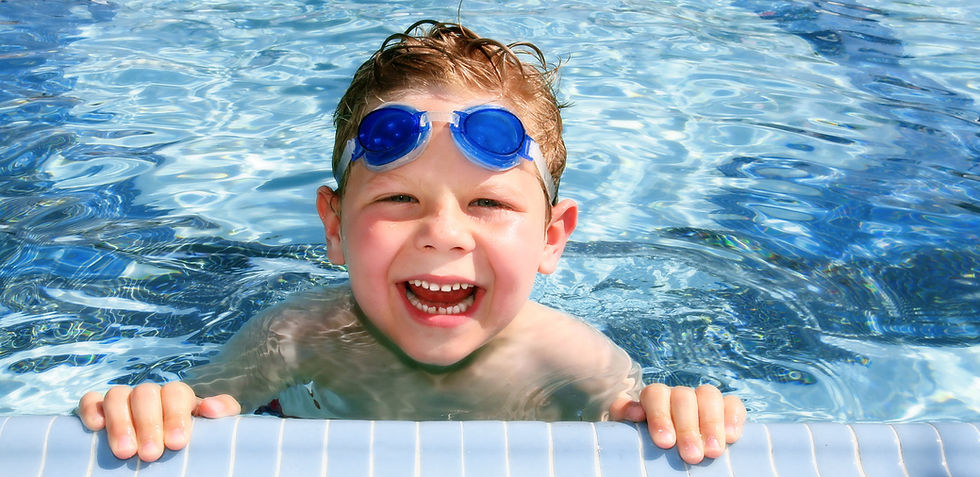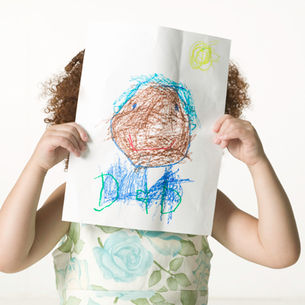Why your child needs to do it without you
- Swimtikes Family Swim School
- Feb 27, 2017
- 5 min read

I watched on as the two year old in front of me grunted, puffed, tried and tried to climb out of the pool up a low ledge. He was struggling to perform a task he had just completed not even two minutes before all by himself, and numerous times before that. But this time he just couldn't seem to get the steps in the right order and co-ordinate all of his limbs to do as he willed. My heart ached at his struggle and frustration, but I knew to give him time to work it out himself.
If I were to step in and do it for him, it would be much more than solving the problem for him. It would be denying him the chance to practice persistence, patience, focus, tenacity and the unteachable skill of self reliance and accomplishment. I would be denying him of the chance to celebrate that he could do it.

I'm not saying not to support, assist and help your child, quite the opposite. I'm saying give them the chance to try, learn and achieve. This is not to be confused with taking over and completing the task for the child. By helping or assisting we are referring to offering a safe and scaffolded learning environment in which a child becomes comfortable to take risks, problem solve and work through possible solutions with the instructor. Our instructors are trained to let children experiment, try for themselves, and yes get frustrated with tasks before stepping in to offer guidance.
As child educator, Magda Gerber points out our well meaning compassion to ease our child's frustration and struggles, often undermines our goal of helping our children develop into independent, self-confident, self-resilient and motivated young being.
So what does fixing the problem or doing it for them look like in a swimming lesson context and what can you do differently?
# Putting a child's googles on for them before they have the chance to try and using a phrase like 'Come here and I'll do it for you'
Instead encourage them to have a couple of goes first, and then follow the instructors lead in how to put the googles on together, teaching the child how to do it.
# Lifting your child out of the pool to sit on the wall as you're worried they are too slow and holding up the class
Let your child try and try and try to climb out. It is a fantastic experience not only to teach determination, persistence and patience to name a few, it also teaches them physical skills like co-ordination and how to use their muscles in different ways. It doesn't matter if your child is slower, as chances are the 'faster' children have been given many opportunities to practice the skills required to climb out hence why they are more now competent in the task required.
# Carrying your mobile child into and out of the pool because it's faster
This is linked to the point above. They need to experience how to navigate the changing landscape around them, including how to go up and down. By being on time to your lesson and following your instructor's cues, there is plenty of time to give them these experiences.
# Involving your self in their conflicts in the pool over toys, who's going first and who splashed the other first.
Our instructors use a pause method where they take the time to observe the situation from afar before involving themselves. This allows two things to happen. Firstly it gives the children involved time to respond to their situation and practice their communication and empathy skills. Secondly children are brilliant at working out conflict on their own and 9 out of 10 times adult intervention isn't required. We ask that you follow your instructors lead, and if a guided learning opportunity is present for conflict resolution, let your instructor be the facilitator.
# Reacting negatively or fussing over your child's current situation such as water up the nose, water in their goggles, an unexpected result to an action they took with actions like rushing to the pool side and phrases like 'Oh no! Are you ok???' and 'That must have been scary. It's ok darling, Mummy/Daddy is here'
These are all fantastic learning opportunities where you can guide your child through cause and effect in a positive way. You can empathize with their situation without causing alarm. Remember your tikelet seeks you out and takes cues from your reaction and reassurance. If you rush over to 'save' them it exacerbates their emotions negatively as they are responding to your reaction. No one likes water in their goggles, water up their nose or the unexpected splash in the face/ accidental submersion, but as a child's guide it is our responsibility to be accountable for our reactions that they learn from and mirror. Magda Gerber sums it up nicely with 'Rather than give the message, “When you are in trouble, you scream and I rescue you,” we would like to convey the feeling, “I think you can handle it, but if not, I am here.” '
# Strapping your mobile child into a pram/capsule in the pool area for the duration of an older child's lesson.
We get it and totally sympathize with you. Those little ones are fast. However it is an essential life skill that they learn to be respectful of the water and other no go areas without adults like roads as soon as possible, not only for their own safety but it helps to nourish self restraint and impulse control. You can start by giving them a 'safe' place to sit and play such as a blanket and gently guiding them back to their 'safe' place if they go to explore. You can go with them and explore the environment around the pool area from a safe distance, with gentle and continuous reminders not to get close to the water. Yes you will be doing this repetitively, probably at least 100 times over, but by instilling boundaries in them early on and letting them experience these boundaries regularly you are adding another layer of protection that may save their life.
Child specialist Janet Landsbury has these three simple tips to help you still help your tikelet;
#1 Always, always, always respond to a request for help.
#2 Be mindful that the way we respond matters. Observe and think before acting.
#3 The definition of “help” is not “fix it”:
Help is paying attention. When children ask our help, we might reply, “Sure, I’ll help! What are you doing?” More often than not, all the help children need is for us to be quietly available.
Help is supporting our children when they express frustration by acknowledging, “Whew, that’s a tough one. You are working hard and making progress.”
Help is calming ourselves rather than cluttering our child’s experience with our own worries, anxiety, and doubt.
Help is maintaining a positive, accepting attitude toward struggles (after all, life is chock full of them!) so that they are normalized for our child.
Help is losing our focus on results, which means taking our eye off the prize and remaining right where our child is in the process.
Help is trusting our children to leave self-chosen tasks unfinished and perhaps return to them later or not, as they wish.
In your love for you child and wanting to make their life easier, try not to deny them these small but important opportunities to learn.
Liz Corr
Manager, Swimtikes Family Swim School

Photo credit: Pinterest and Renee Brown Photography
#goodgirl #goodboy #goodchild #family #twoyearold #childhood #spatialawareness #childdevelopment #negotiatingskills #curriculum #child #rightswimschool #swimschool #learntoswim #infantloss #emotionaldevelopment #toddler #threeyearold #children #waterquality #independentexploration #swimminglessons #risktaking #moving #infantswimming #parenting #saferswimming #infant #bestvalue #bestswimschool













Comments